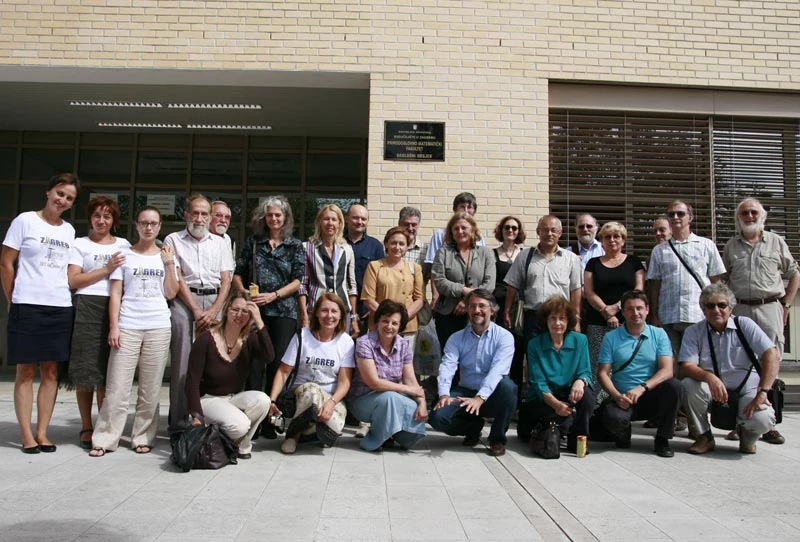Palaeozoic floristics
Current projects
Area of coal swamps of Variscan Euramerica. Drawn by C. Cleal.
Members of the IGCP 575 team at Zagreb (2011).
- IGCP 575 - Pennsylvanian terrestrial habitats and biotas of southeastern Euramerica.
This international collaborative project, being coordinated by vegetation History Section staff, and operating under the auspices of UNESCO and IUGS, is investigating changing floras, faunas, landscapes and climates during late Carboniferous times, with particular emphasis on southern Europe and Turkey (www.igcp575.org). Previous investigations suggested that major changes in vegetation and climate that affected western Europe, including Wales, about 307 million years ago had been triggered by changes in southeastern Europe. The aim is to bring together the palaeontological and geological evidence from across Europe to obtain a more holistic understanding of these major ecological events. In addition to its coordinating role within the project, Vegetation History staff are directly involved in revisions of the fossil floras from Bulgaria, Romania, Croatia and Italy. The project team consists of over 50 specialists from 19 countries. - Late Carboniferous floristics of Upper Silesia.
Upper Silesia holds a key intermediate position between the lowland coal swamps of places like South Wales and the upland swamps of Bohemia. Understanding the floristic dynamics of Upper Silesia is thus critical for obtaining a complete picture of the coal swamp habitats across Europe. This collaborative project with colleagues in the Czech Republic and USA, is being funded by the Czech Grant Agency.
Past projects in this research area
The Section has co-ordinated two earlier international projects in this field. The first project, funded through the NATO Science Programme, occurred between 2000 and 2002 and compared the late Carboniferous vegetation between South Wales, Nova Scotia and Bulgaria. The second project was a larger collaborative undertaking under the auspices of UNESCO's International Geological Correlation Programmme (IGCP) and involved colleagues across Europe and eastern North America. The aim was to establish detailed distributional patterns of the biotas during late Carboniferous times and how this related to changes in the physical habitats including climate. The Section has hosted two recent CASE studentships, in partnership with the universities of Sheffield and Birmingham, investigating late Carboniferous floras of northern China and Bristol.

